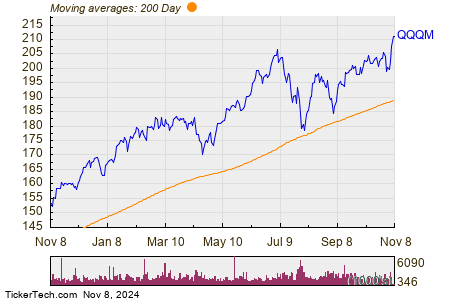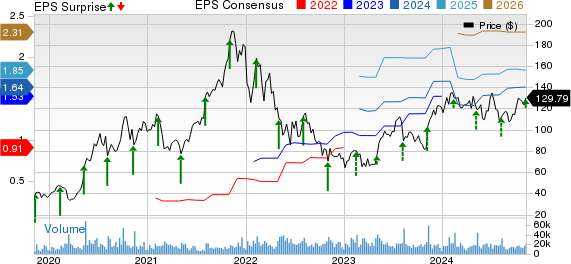In the realm of trading and investing, it is essential to navigate potential hazards that can result in financial setbacks. One such pitfall is the bear trap, a pattern characterized by an abrupt downward price movement followed by a sudden reversal.
This deceptive pattern lures bearish investors into selling short, only to incur losses when prices unexpectedly rise. Margin calls and the necessity to cover positions by repurchasing borrowed shares are often triggered, exacerbating the losses.
It is important to note that the bear trap is a short-term phenomenon associated with technical trading and is not suitable for long-term, buy-and-hold investors.
This article aims to shed light on the nature of bear traps, differentiate them from bull traps and short sales, analyze their causes, and provide strategies to evade falling into the trap. By comprehending the intricacies of the bear trap, investors can make more informed decisions and safeguard their portfolios from potential financial setbacks.
Key Takeaways
- A bear trap is a sudden downward price movement followed by a price reversal, luring bearish investors to sell short.
- Bear traps are short-term patterns associated with technical trading and not suitable for long-term, buy-and-hold investors.
- Bear traps can be distinguished from bull traps, which involve false signals indicating a break in a trend but result in a reversal back to the original trend in the opposite direction.
- To avoid falling into a bear trap, traders can avoid short positions when trading volume is low, use alternative strategies like buying put options, and implement cautious trading strategies.
Definition and Characteristics of a Bear Trap
A bear trap is defined as a sudden downward price movement followed by a price reversal, luring bearish investors to sell short. This short-term pattern associated with technical trading can be detrimental to traders if not approached with caution.
It is crucial for traders to understand the characteristics of a bear trap in order to develop effective trading strategies and implement proper risk management techniques. Short sellers, who expect prices to fall, are particularly vulnerable to bear traps as they lose money when prices rise.
To avoid falling into a bear trap, traders should avoid short positions when trading volume is low, consider alternative strategies like buying put options, and utilize tools such as Fibonacci levels to determine support and resistance levels.
Bear Trap Vs. Bull Trap
When comparing the characteristics of a bear trap to those of a bull trap, it is important to understand the key distinctions between these two patterns in order to navigate the markets effectively. Both bear traps and bull traps involve false signals indicating a break in a trend, but their direction of trends and reversals are opposite. A bear trap occurs when there is a break downward below a key support level after an upward trend, while a bull trap happens when there is a break upward above a key resistance level after a downward trend. To identify and avoid these traps, trend analysis plays a crucial role. Additionally, psychological factors can influence the formation of bear traps, causing bearish investors to expect further downward movement and get trapped when the price reverses upward. Traders should also be cautious of false breakouts in the market, using technical analysis tools and volume indicators to confirm the authenticity of the breakout.
| Bear Trap | Bull Trap |
|---|---|
| Break downward below a key support level | Break upward above a key resistance level |
| Occurs after an upward trend | Occurs after a downward trend |
| Traps bearish investors | Traps bullish investors |
| Reversal back to the original downward trend | Reversal back to the original upward trend |
Bear Trap Vs. Short Sale
Continuing the analysis from the previous subtopic, the distinction between a bear trap and a short sale lies in their respective strategies and outcomes in the market. Here is a breakdown of the differences:
- Strategy:
- Bear Trap: A bear trap aims to lure bearish investors into selling short by creating a sudden downward price movement followed by a price reversal. It capitalizes on the expectation of further downward movement after a break below a key support level.
- Short Sale: On the other hand, a short sale involves borrowing shares and selling them, expecting the price to fall. Short sellers are exposed to unlimited loss potential if the price rises and they have to cover their positions.
- Risks:
- Bear Trap: The risks associated with a bear trap include the potential for bearish investors to lose money when the price reverses upward, triggering margin calls or the need to cover their short positions.
- Short Sale: Short selling carries its own set of risks, as short sellers can experience losses if the price rises instead of falling, forcing them to buy back the borrowed shares at a higher price.
- Impact on Market Psychology:
- Bear Trap: Bear traps can have a significant impact on market psychology. They can create a sense of false security for bearish investors, leading them to believe that the market is continuing its downward trend. When the trap is sprung and the price reverses, it can cause panic and a rush to cover short positions, resulting in a sharp upward movement in prices.
Causes of a Bear Trap
To understand the causes of a bear trap, it is important to analyze the factors that contribute to the sudden downward price movement and subsequent price reversal.
One key factor to consider is trading psychology. Bear traps often occur when bearish investors expect further downward movement after a break below a key support level. These investors enter into short positions, anticipating profits. However, when the price unexpectedly reverses upward, they become trapped and lose money.
Risk management also plays a crucial role in bear traps. Traders who fail to implement cautious strategies or ignore warning signs may fall victim to these traps.
Ways to Avoid a Bear Trap
To mitigate the risks of falling into a bear trap, traders can implement various strategies to navigate the market effectively. This is crucial because bear traps can lead to significant losses if not handled properly.
Here are three ways to avoid a bear trap:
- Importance of Risk Management: Implementing proper risk management techniques is essential in avoiding bear traps. This includes setting stop-loss orders, diversifying your portfolio, and limiting the amount of capital allocated to short positions. By managing your risk effectively, you can minimize the impact of bear traps on your trading performance.
- Psychological Factors: Emotions can play a significant role in falling into a bear trap. Greed and fear can cloud judgment and lead traders to make impulsive decisions. It is important to remain disciplined and stick to your trading plan, even in the face of adverse market conditions. Keeping emotions in check and maintaining a rational mindset can help you avoid getting caught in a bear trap.
- Technical Analysis: Utilizing technical analysis tools can assist in identifying potential bear traps. Pay attention to key support and resistance levels, trend patterns, and indicators such as moving averages. Additionally, using Fibonacci retracement levels can help determine critical levels of support and resistance. By incorporating technical analysis into your trading strategy, you can increase the likelihood of avoiding bear traps.
Importance of Trading Volume in Avoiding Bear Traps
Traders can enhance their ability to avoid bear traps by carefully monitoring the trading volume. Trading volume analysis plays a crucial role in identifying market liquidity and potential bear traps. By understanding the volume of shares being bought and sold, traders can gauge the strength and sustainability of price movements. A sudden drop in trading volume during a downward price movement may indicate a bear trap. To illustrate the importance of trading volume in avoiding bear traps, consider the following table:
| Scenario | Trading Volume Analysis | Potential Bear Trap |
|---|---|---|
| High trading volume | Increasing volume | Less likely |
| Low trading volume | Decreasing volume | More likely |
| Normal trading volume | Consistent volume | Neutral |
Utilizing Alternative Strategies to Avoid Bear Traps
One effective approach to avoiding bear traps is by implementing alternative strategies. Here are three alternative strategies that can help investors avoid falling into a bear trap:
- Buying put options: Purchasing put options gives investors the right to sell an asset at a predetermined price within a specified timeframe. This strategy allows investors to profit from a decline in the price of the underlying asset, providing a hedge against potential losses in a bearish market.
- Utilizing Fibonacci levels for support and resistance: Fibonacci levels are a technical analysis tool that helps identify potential support and resistance levels in a price chart. By using Fibonacci retracement levels, investors can determine key levels where the price is likely to reverse, helping them avoid entering short positions at vulnerable points.
- Avoiding short positions altogether: Instead of taking a bearish stance by entering into short positions, investors can opt for alternative investment strategies such as diversification, long positions, or investing in defensive sectors. These strategies can help minimize the risk of falling into a bear trap and provide more stable returns in the long run.
Using Technical Analysis to Identify Bear Traps
Technical analysis plays a crucial role in identifying bear traps. Traders can utilize various tools and techniques to spot potential bear traps and avoid falling into them.
One such technique is using candlestick patterns to identify bear traps. Certain candlestick patterns, such as the bearish engulfing pattern or the evening star pattern, can indicate a potential reversal in price after a downward movement. By recognizing these patterns, traders can be cautious and avoid getting trapped in short positions.
Another important aspect of technical analysis in avoiding bear traps is the use of trend lines. Trend lines help identify the direction and strength of a trend. By drawing trend lines on a price chart, traders can determine the support and resistance levels that are crucial in identifying bearish movements and potential bear traps.
Frequently Asked Questions
What Are Some Common Indicators or Signals That Can Help Identify a Potential Bear Trap?
Common signs of a bear trap in stock trading include a sudden downward price movement followed by a reversal, luring bearish investors to sell short. In the cryptocurrency market, potential bear traps can be spotted through key support level breaks and reversals.
Are There Any Specific Market Conditions or Factors That Increase the Likelihood of a Bear Trap Occurring?
Specific market conditions and factors that increase the likelihood of a bear trap occurring include weak economic indicators, downward trends in the stock market, and negative investor sentiment. These factors create an environment where bearish investors are more likely to enter short positions and potentially get trapped.
How Can Traders Protect Themselves From Potential Losses if They Find Themselves Caught in a Bear Trap?
Traders can protect themselves from potential losses in a bear trap by implementing protective strategies and risk management techniques. These may include setting stop-loss orders, using trailing stops, diversifying their portfolio, and being cautious with short positions.
Are There Any Notable Examples or Historical Instances of Bear Traps That Traders Can Learn From?
Lessons from the past: Historical bear trap examples and their impact on traders' strategies can provide valuable insights. Analyzing notable instances of bear traps helps traders avoid similar pitfalls and develop more effective trading strategies.
Can Bear Traps Occur in Any Market or Asset Class, or Are They More Commonly Seen in Specific Sectors or Types of Securities?
Bear traps can occur in any market or asset class, but they may be more commonly seen in specific sectors or types of securities. For example, bear traps in emerging markets and cryptocurrency markets have been observed due to their volatility and speculative nature.



